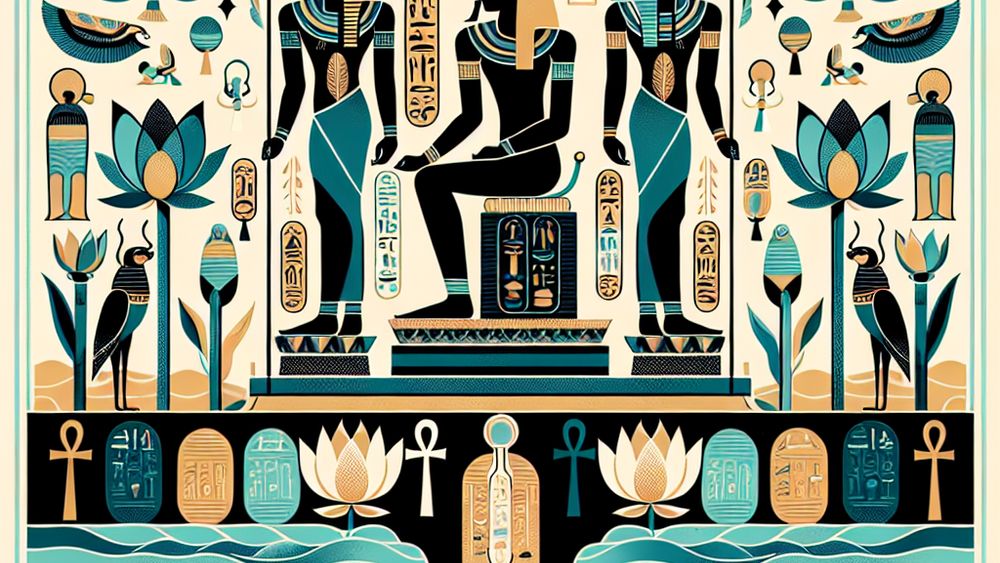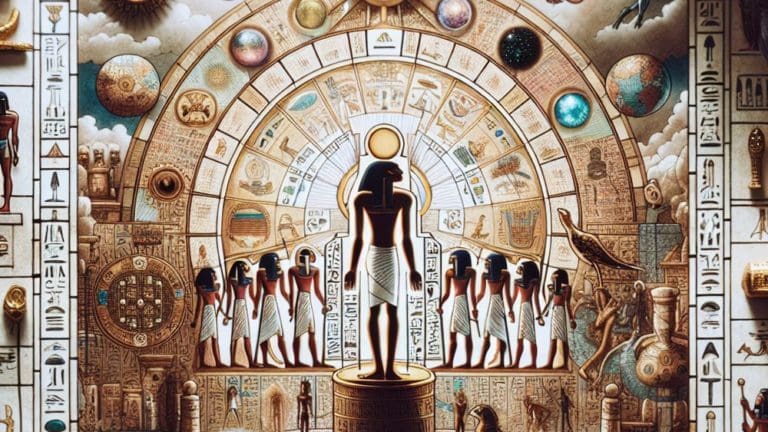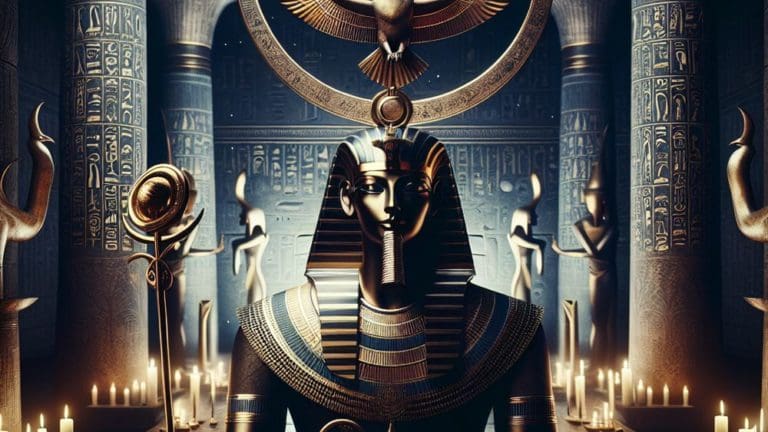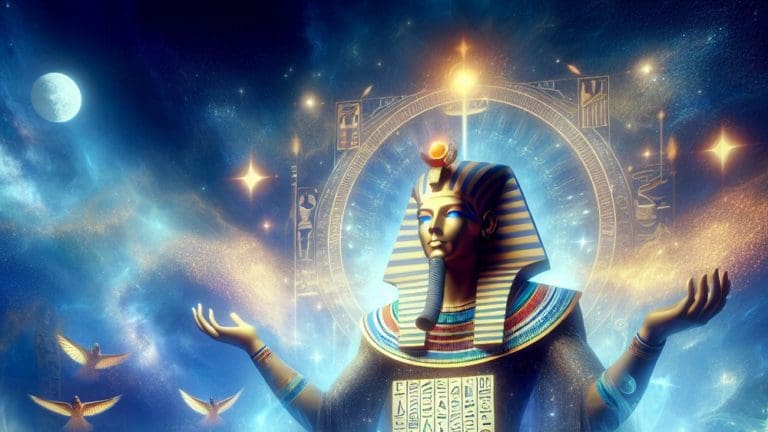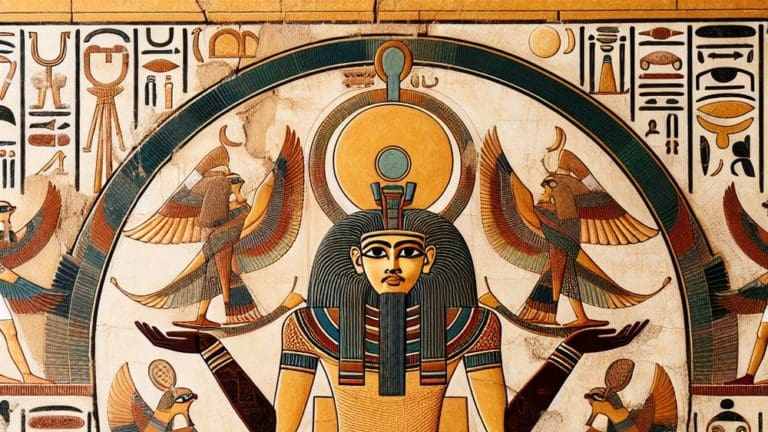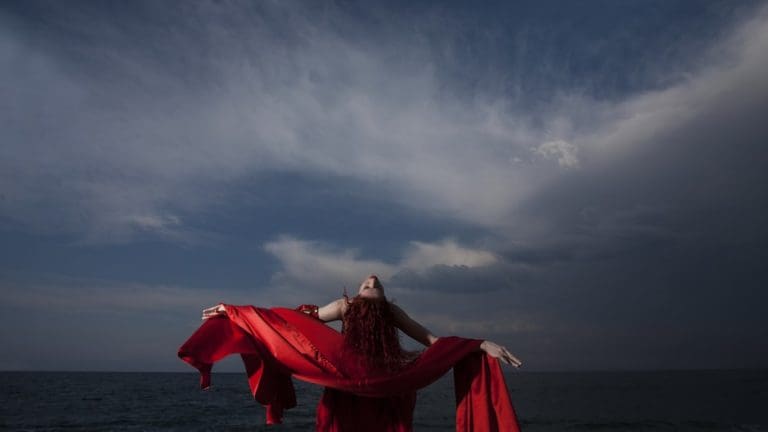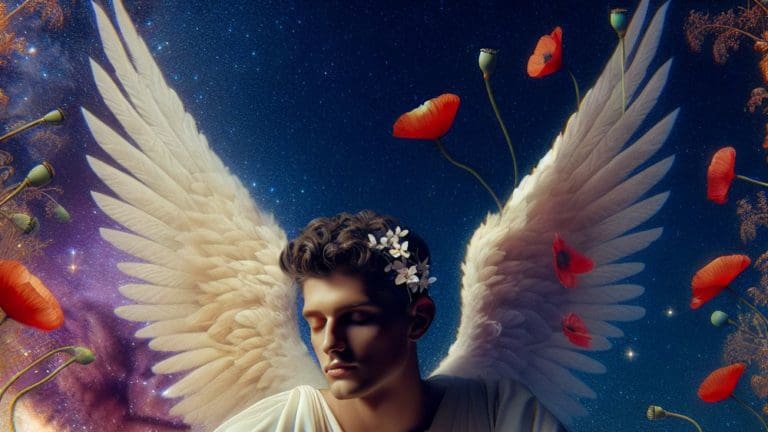Divine Fertility: Exploring Egyptian Fertility Gods
Divine Fertility: Exploring Egyptian Fertility Gods
Imagine stepping back in time, walking through the majestic temples and vibrant marketplaces of ancient Egypt. What secrets and stories would the symbols and deities woven into every aspect of daily life reveal to us today? Particularly, the allure of the Egyptian fertility gods gives us a fascinating glimpse into the values, hopes, and very essence of ancient Egyptian society.
Key Points:
- Egyptian fertility gods symbolized the cycles of life, death, and rebirth.
- Key figures in fertility worship include Osiris, Isis, Hathor, and Min.
- Symbols of fertility gods like the crook and flail, throne, cow, and lettuce were prevalent.
- Fertility gods were integral to agricultural prosperity and family well-being.
- Major Egyptian fertility gods such as Osiris, Isis, Hathor, and Min had rich myths.
- Fertility gods played a crucial role in ensuring prosperity and renewal in ancient Egyptian society.
- Worship of fertility gods involved elaborate rituals and offerings to secure balance between life and death.
These deities were not just worshipped and revered; they were integral to the Egyptians’ understanding of the cycles of life, death, and rebirth, symbolizing the sustaining forces that drove the fertility of both the land and its people. Through exploring these ancient beliefs, we embark on a journey to unravel the mysteries of life as perceived by one of history’s most intriguing civilizations.
The Pantheon of Egyptian Fertility Deities
The pantheon of Egyptian fertility deities is as diverse as it is compelling, featuring gods and goddesses responsible for various aspects of life and creation. From the waters of the Nile to the birth of children, these deities personified the ancient Egyptians’ deep connection with the natural world and its cycles.
Key Figures in Fertility Worship
Among the revered figures in the worship of fertility, a few stand out for their significant roles and widespread devotion.
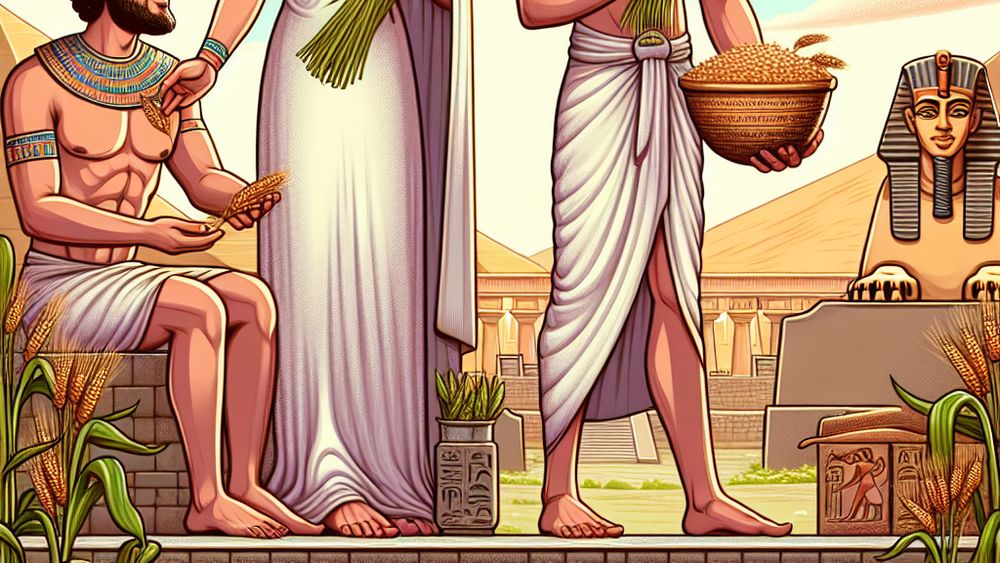
- Osiris: Often hailed as the god of the afterlife and fertility, Osiris’s association with crop growth and his resurrection mythology cemented his position as a symbol of rebirth.
- Isis: Known as the goddess of magic and motherhood, Isis’s powers of healing and protection made her one of the most beloved deities.
- Hathor: As the cow goddess of love, joy, and fertility, Hathor was celebrated not just for her life-giving aspects but also for her connection to music and dance.
- Min: The patron of the harvest and fertility, Min was worshipped for his role in ensuring the fertility of the earth and the prosperity of the people.
These key figures were central to the fervent prayers and rituals seeking blessings for fertility, prosperity, and protection.
Osiris, Isis, Hathor, and Min are key figures in fertility worship due to their significant roles and widespread devotion, embodying rebirth, healing, love, and prosperity.
Symbols and Icons of Fertility Gods
From the ornate temples to the jewelry adorning the believers, symbols of the fertility gods were omnipresent in ancient Egypt, each carrying deep meanings.
| God/Goddess | Symbol | Representation |
|---|---|---|
| Osiris | Crook and Flail | Sovereignty, fertility, and the cycle of life |
| Isis | Throne, Ankh | Magic, motherhood, and the essence of life |
| Hathor | Cow, Sistrum | Joy, fertility, and the nurturing aspects of life |
| Min | Lettuce, Flail | Harvest, fertility, and the renewal of life |
Through these symbols, the Egyptians expressed their reverence and invoked the benevolence of the fertility deities, integrating these symbols into their daily lives and rituals.
The Role of Fertility Gods in Ancient Egyptian Society
The role of fertility gods in ancient Egyptian society extended far beyond the confines of temples and sacred rituals. These deities were essential to the fabric of daily life and the eternal cycle of nature that the Egyptians held in reverence. [1]
- Agricultural prosperity: Fertility gods were invoked for their blessings on the Nile’s inundation and the land’s fertility, crucial for a bountiful harvest.
- Family and childbirth: Deities like Isis were prayed to for protection in childbirth and the well-being of children, embodying hopes for continuity and the well-being of the family.
- Rituals and festivals: Important festivals and rituals were organized in honor of fertility deities, celebrating the cycles of life and ensuring the gods’ favor for the people and the land.
In every grain sown into the earth and every prayer whispered for a child, the fertility gods were present, guiding and blessing the Egyptians through the cycles of life.
Fertility gods played a vital role in ancient Egyptian society, influencing agricultural prosperity, family well-being, and the celebration of life through rituals and festivals.
Major Egyptian Fertility Gods and Their Myths
Diving into the myths surrounding the major Egyptian fertility gods reveals a tapestry of stories rich with themes of resurrection, power, and renewal. Each deity’s myth not only entertained but also imparted wisdom about the cycles of life and the importance of harmony with the natural world.
Osiris: God of the Afterlife and Fertility
Osiris, the iconic god of the afterlife and fertility, embodies the resurrection and the fertile flooding of the Nile, essential for Egyptian agriculture. His myth, marked by death and rebirth, symbolizes the eternal cycle of life and regeneration, mirroring the natural world’s rhythms. This deep association with the cycle of life made Osiris not only a god of the dead but also a deity of fertility, ensuring the land’s fertility and the people’s well-being.
In the pantheon of Egyptian gods, his role is pivotal, marrying his sister Isis, and together, they become a powerful symbol of fertility and protection. His narrative includes being killed by Set, his brother, only to be resurrected by Isis, establishing a core mythology around death and rebirth.
- Osiris’s symbol: the Djed pillar, representing stability and regeneration
- His association with green skin: symbolizing rebirth and fertility
- The annual flooding of the Nile: linked to Osiris’s tears, rejuvenating the earth
Isis: Goddess of Magic and Motherhood
Isis, revered as the goddess of magic and motherhood, plays a crucial role in Egyptian mythology. Her devotion to Osiris, after his murder by Set, showcases her as the epitome of the loyal wife and mother, using her magical skills to resurrect Osiris, thereby associating her with the themes of restoration and protection. This act not only signifies the power of love and magic but also cements her role as a caretaker of the dead and a guide in the afterlife.
Her veneration transcends her narrative, emphasizing her influence over fertility, health, and wisdom. Pilgrims from all over Egypt would flock to the temples dedicated to Isis, seeking blessings for fertility and protection for their families, highlighting her central place in ancient Egyptian society.
- The knot of Isis (tyet), resembling an ankh: symbolizing life and welfare
- Isis nursing Horus: an icon of maternal care and royal lineage
- Isis’s wings: representing protection, often depicted in temple reliefs and tomb paintings
Isis embodies loyalty, motherhood, and magic, symbolizing restoration, protection, and guidance in Egyptian mythology.
Hathor: The Cow Goddess of Love and Joy
Hathor, celebrated as the cow goddess of love, music, and joy, spreads her benevolence across the vast deserts of Egypt, nurturing mankind with her maternal warmth. Depicted as a cow, a woman with cow’s ears, or simply a woman wearing the cow horns and sun disk, she personifies the principles of femininity and motherhood. Her mythology is as rich and fertile as the lands nurtured by the Nile, inviting us to explore the depths of ancient Egyptian spirituality and devotion.
The temples of Dendera, dedicated to Hathor, stand as a testament to her importance in Egyptian life. They were centers of music and dance, reflecting her domains of beauty and happiness. Pilgrimages to these sites were common, as Hathor’s favor was sought for fertility, love, and protection, establishing her as a beloved deity among the Egyptian people.
- Representation: Cow, woman with cow’s head, or woman wearing cow horns
- Associated with: Music, dance, fertility, and joy
- Worship centers: Dendera, Thebes
Min: Patron of Harvest and Fertility
Min, the ancient patron of harvest and fertility, stands tall amidst the Egyptian pantheon as a symbol of sexual potency and the bounty of nature. Often depicted with an erect phallus and a flail, he was celebrated through lavish festivals, particularly the “Feast of Min,” where the first harvest was dedicated to him. This festival not only showcased the importance of fertility in sustaining life but also emphasized Min’s role in ensuring the prosperity of the community.
Worshipped since the predynastic period, Min’s cult persisted through various epochs, adapting to the changing landscapes of Egyptian religious life. His temples, located in areas like Coptos and Akhmim, were centers of agricultural and fertility rituals, capturing the essence of Min’s domain over the fertility of the land and its people.
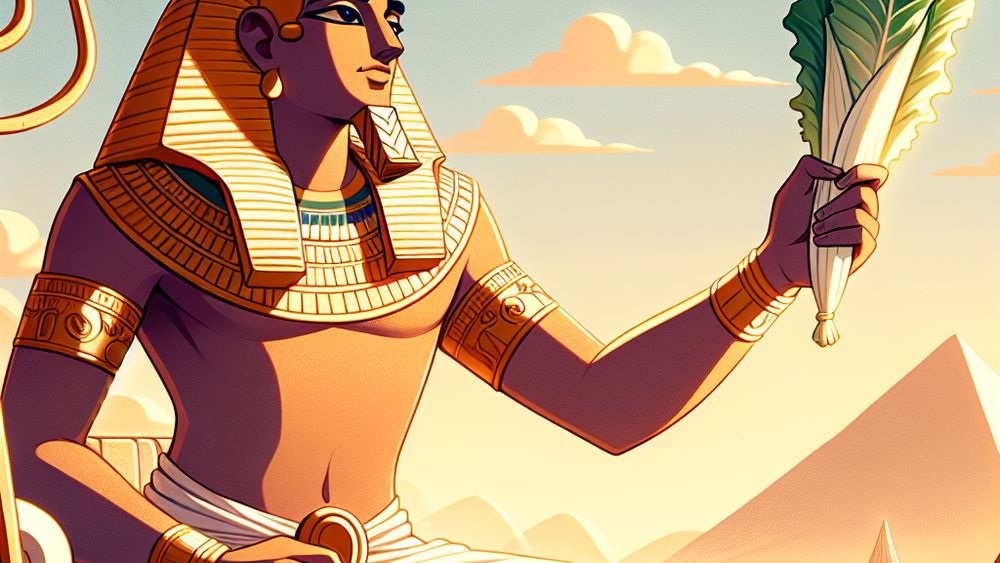
Min, the ancient Egyptian deity Min, symbolizes sexual potency and the bounty of nature through fertility rituals and festivals dedicated to ensuring prosperity and community well-being.
FAQs
1. How did ancient Egyptians worship fertility gods?
Worshiping the fertility gods was central to the ancient Egyptians, who conducted elaborate rituals and offered prayers and gifts to ensure prosperity and fertility across the land. They believed that by honoring these deities, they could secure a balance between the forces of life and death, thus ensuring the renewal of life each year.
2. What are some common symbols associated with Egyptian fertility gods?
Common symbols associated with Egyptian fertility gods included the ankh, symbolizing life; the was scepter, denoting power; and various natural elements like crops, animals, and the Nile River, representing abundance and fertility. These symbols were omnipresent in temples, artwork, and ritual objects, embodying the deities’ essence and the Egyptians’ hopes for life and prosperity.
3. Can you name a festival dedicated to a fertility god?
One of the most celebrated festivals dedicated to a fertility god was the Beautiful Feast of Opet. This festival honored Amun, a king of the gods associated with fertility. During the celebrations, a ceremonial procession moved from Karnak to Luxor, symbolizing the rejuvenation of the king’s power and the land’s fertility.
4. How do fertility gods fit into the broader Egyptian mythology?
Fertility gods fit into the broader Egyptian mythology as crucial figures representing life, rejuvenation, and the cycle of birth and rebirth. These deities were believed to control the natural world, ensuring the Nile’s annual flooding and the successful growth of crops. Their myths intertwined with themes of creation, death, and the afterlife, highlighting their integral role in the cosmic order. [2]
Conclusion
The enigmatic lore of Egyptian fertility gods forms a fascinating chapter in the tapestry of ancient mythology, offering us insights into the importance of life and regeneration in the eyes of the ancient Egyptians. As we delve into the stories of Osiris, Isis, Hathor, and Min, we are reminded of the profound connection between the land, its people, and the divine forces that govern existence. Their worship, rich in symbols and steeped in vibrant festivals, reflects a culture deeply entwined with the cycles of nature and the perennial quest for harmony and prosperity. As we continue our exploration, let us carry with us the lessons and the wisdom of these ancient deities, allowing their stories to inspire us and enrich our understanding of the past. Thank you for joining me on this journey to uncover the allure of the Egyptian fertility gods. Until next time, seek out the mysteries that history has to offer.
Warmly,
Cedric

